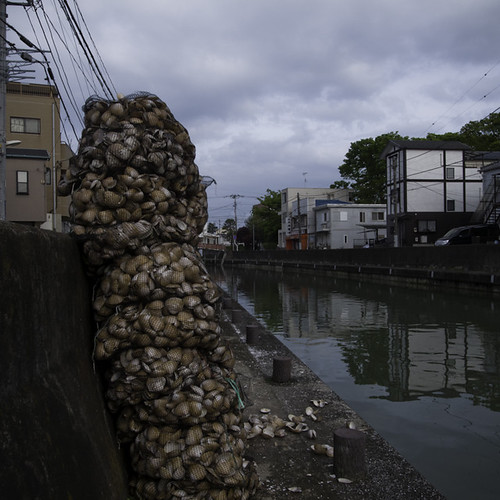The Old Urayasu, is Slipping Away
I have been in Japan more than 10 years. I have either lived in Urayasu or spent most of my time there. I have come to love the old part of town. The town that harks back to its days as an important fishing town on Tokyo bay. Most of the the fishermen these days have to offer fishing tours rather than reap the harvest from the sea. Or they have a yakatabune (a boat used for parties). Unlike their forefathers whose livelihood was directly dependent on what the sea provided.
Those days are quickly coming to an end. The old part of town will not be much different from the new part of town within the next 10 years. Therefore, I have witnessed the destruction of an authentic piece of Japanese culture.
The heart of the old part of Urayasu is Flower Dori (Street). At one point in time before the highway and the Tozai train line was built this was the main drag. Small shops hawking their wares. Fisherman homes lined along the canals that let out into tokyo bay. The first time I walked down the street about 10 years ago I was amazed that there were still public baths on the street.
Now we jump to just a few days ago. I turn my bike to head down Flower Street to see how the destruction has been progressing, only to learn that it has been progressing at an almost unimaginable speed. A beautiful old tackle shop had been replaced with a tasteless apartment building and that was just the beginning.
The street was being widened at one point. Both of the historic buildings on both sides of the street had been leveled into dust. My heart just sank. It was heartbreaking seeing the street that was once so full of character being replaced with modern apartment buildings.
I had hopes that the city would preserve some of its own heritage, but that dream has been turned to dust. They won’t stop until there is nothing left to rebuild. It was one building at a time, now they are being replaced in twos and threes. The pace is unrelenting.
One of my favorite stomping ground for photographs will be left as memories in only in pixels, and celluloid that I have captured them on. I much rather be able to wander those streets, then just be at home and look at photographs.
Old Urayasu will be new Urayasu in a short time. I shed some celluloid tears.



May 5th, 2012 at 4:05 pm
I really agree with your point of view. I was shocked to see the changes too. This article of yours reminds me a story I came across last year. I went to a grocery store in Urayasu to buy some food some late afternoon. An old lady came in the store after me and ordered 5-6 croquettes. But the shop clerk(maybe owner…) politely asked “I am afraid you came a few hours ago and bought same numbers of croquette. Could you go back your home and check about it with your family members and if you really need them, please come again.” I thought long relationship and history between customers and shops could let them do that. But food desert seems to have started there. As you say, we left the taste somewhere during the current reckless development. For the upcoming society of declining and aging population, we might need these kinds of communication, not only offering low prices or high quality controls like chain stores do. I guess this communication is one of the solutions to prevent death in isolation that is getting more serious issue in Japan.
May 5th, 2012 at 4:24 pm
a beautiful story tomo and all too true.
the Japan’s society is aging very quickly. the young people
aren’t as committed to the old ways as the older generations
were. the young people no longer see the promise of a better tomorrow. they have become selfish, and thinking of only their privacy.
it is touching to see that this store owner knew his customer well, and was kind enough to ask, (maybe the customer forgot) she had bought some already.
thanks for the thoughts and the kind story!